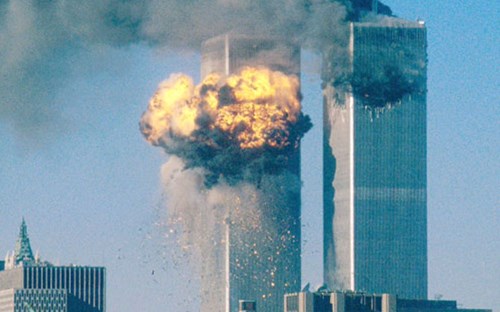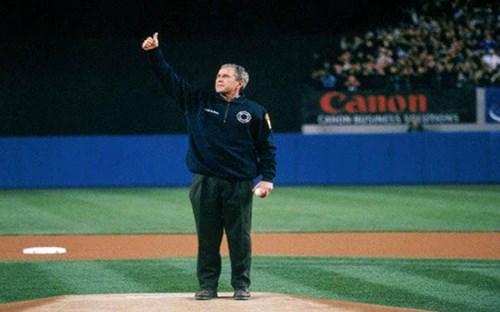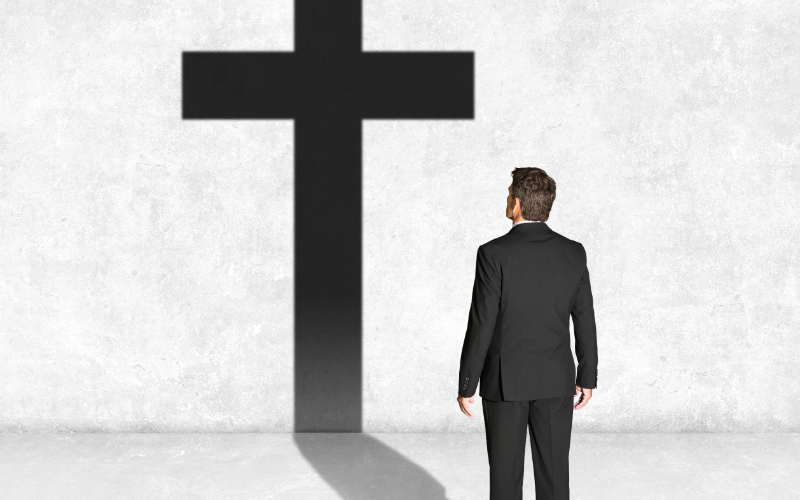Nicholas Giordano, a higher education fellow at Campus Reform, is also a New York-based political science professor. At a community college 45 minutes from the attack, he has been teaching students about the 9/11 attack every year since it happened. Over time, though, he has seen the faces change in the classroom as that fateful day moves farther away.
“Many of them lost family and friends,” he recalls of students in years past. “Many of them remember exactly where they were when the planes struck the towers and the Pentagon. And, unfortunately, today in recent years we've seen a disconnect."

The terrorist attack, which killed 2,977 people, will hit the quarter-century mark when it is remembered in September 2026.
An 18-year-old sitting in Giordano’s class this year would have been born five years after the first airliner, American Airlines Flight 11, crashed into the North Tower at the World Trade Center at 8:46 a.m. A second airliner, Flight 175, crashed into the South Tower at 9:03 a.m.
President George W. Bush, who was reading to an elementary school classroom, was told of the second plane just minutes later when Andrew Card, his chief of staff, whispered the news in his ear.
Just as that second plane crash made the situation clear to President Bush and the White House, the American public was also learning they were watching a terrorist attack and not a tragic accident.
"They don't understand,” Giordano says, “how the world and the country profoundly changed.”
On the scene of the Twin Towers attack, the official number of firefighters and paramedics killed is 343. The number of police officers killed that day is 23, from the New York City Police Department, and 37 from the Port Authority.
 Of the civilians killed that morning, the Tower One casualties was the highest at 1,402.
Of the civilians killed that morning, the Tower One casualties was the highest at 1,402.
After that fateful day, the American public would learn about Todd Beamer and his “let’s roll” comment, when he and other Flight 93 passengers realized their fate but attempted to stop the hijackers.
On the scene of the Twin Towers attack, the official number of firefighters and paramedics killed is 343. The number of police officers killed that day is 23, from the New York City Police Department, and 37 from the Port Authority.
After the Towers collapsed, a photographer captured the moment rescue workers carried away the body of a priest, Franciscan Friar Mychal Judge. The priest, a chaplain for the New York City Fire Department, died from falling rubble while praying for firefighters on the scene.

Dr. Robert Jeffress, the pastor of First Baptist Church Dallas, remembers how the grief-stricken American public reacted to the 9/11 attack: Filling up the churches and the synagogues.
“Our history as a country if filled with examples of momentary turns toward God,” the longtime pastor says, “whether it was Wall Street in 1929 or the Japanese attack on Pearl Harbor.”
People instinctively seek out God when tragedy hits, Jeffress says, but the reality is the human heart is far from Him. That is why, over the following weeks and months, the crowds thinned, he says.
 In a related interview on American Family Radio, Giordano likens stories of 9/11 to generations being told about the Pearl Harbor attack and the JFK assassination. Experiencing those terrible events, he says, are not the same as being told about them.
In a related interview on American Family Radio, Giordano likens stories of 9/11 to generations being told about the Pearl Harbor attack and the JFK assassination. Experiencing those terrible events, he says, are not the same as being told about them.
A stark difference in 2024, and a dangerous one, the professor says, is the anti-American views among young people today. As evidenced by ongoing pro-Hamas protests on campuses, young people have been influenced by their high school teachers and college professors to hate their own country.
“We've seen America be classified as a racist, bigoted and oppressed country,” Giordano told show host Jenna Ellis. “They have disdain for the United States.”
For many other Americans, however, they would prefer to remember the feeling when President Bush threw the ceremonial first pitch in Yankee Stadium. Wearing a bulky bulletproof vest under an FDNY jacket, he threw a strike --- right down the middle --- to start Game Three of the World Series.







